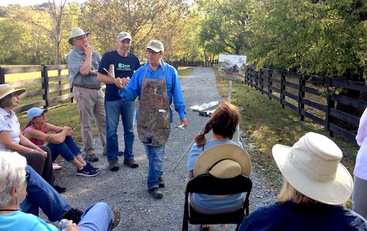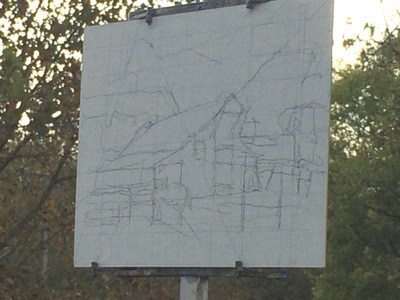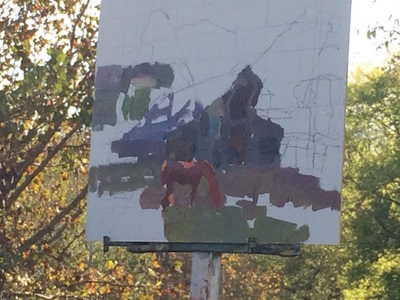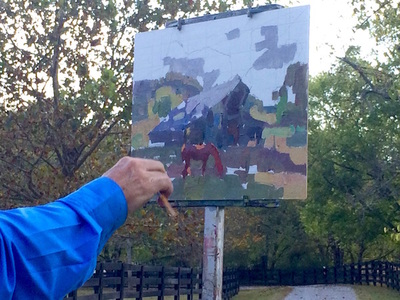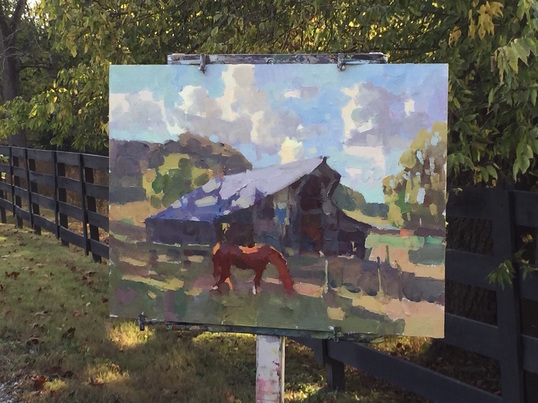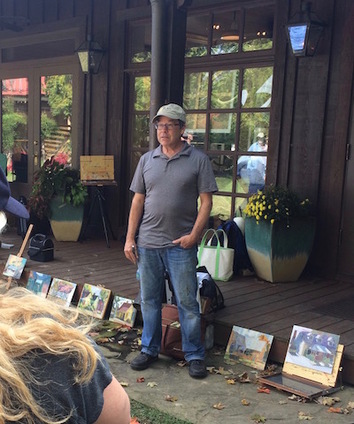|
The previous blog post was about Kevin helping us understand the ins and outs of value (light & dark). Moving on to "shapes"...Kevin Macpherson pretty much exploded our brains as he presented the importance of abstraction in representational painting. His explanation is that irregular, unexpected patterns are pleasing to the human brain, so I found this on the internet: A leading proponent of this theory is V.S. Ramachandran, director of the Center for Brain and Cognition at UC-San Diego and author of The Tell-Tale Brain: A Neuroscientist’s Quest for What Makes Us Human. Ramachandran outlined 10 aesthetic principles that interest or delight the neurons in our visual cortex. One of them, peak shift, describes the way “we find deliberate distortions of a stimulus even more exciting than the stimulus itself.” And this: In an article on peak shift in Psychology Today, Jonah Lehrer describes a study in which subjects could more readily identify famous figures like Richard Nixon by cartoon caricatures than by photographs. The part of the brain recruited for facial recognition, called the fusiform gyrus, excels at interpreting the qualities that distinguish one object from another, to the point where it favors slightly warped representations of reality. Anything to make our paintings more pleasing to the viewer! So Kevin demonstrated some of the ways to keep abstraction within the picture plane:
Kevin used a clever technique of dividing the canvas into completely random geometric shapes and lines and encouraged us to use those as we compose our subject matter to paint. This is a bit hard to explain in a blog so you will have to take one of his workshops sometime! I highly recommend it! (click on photos to read captions)
3 Comments
Susy
10/30/2016 02:44:09 pm
Thanks for sharing this Wendy!! I feel like I was just at the workshop too!! Love the idea of placing paint in general are and not so worried about painting the exact shape. A very freeing way to paint I imagine!!! So fun!!!
Reply
Wendy
10/30/2016 06:21:56 pm
It was challenging to explain, Susy. I'm glad you could get the drift :) I hope that it will become more and more habitual to do as I paint...so far it adds another layer of hard thinking and decision making. But I do like the results!
Reply
Betty Cribbs
10/30/2016 05:30:25 pm
Ok, this time I'm with Kathleen...my head is spinning and I can't imagine following those directions. Bless you as you try. I know you can do it!
Reply
Leave a Reply. |
Hello! My name is Wendy and I am passionate about oil painting! Whether in the studio or out in Mother Nature, I get lost in the experience of capturing on canvas the moment and the feel of what I am painting. I pour my love and energy into every single piece of artwork and I hope it shows! This blog is a place where I can use words to talk about art, painting, life, faith, things that make me laugh, and things that inspire. I love every response, so don't be shy about leaving a comment...Archives
June 2024
Categories |
